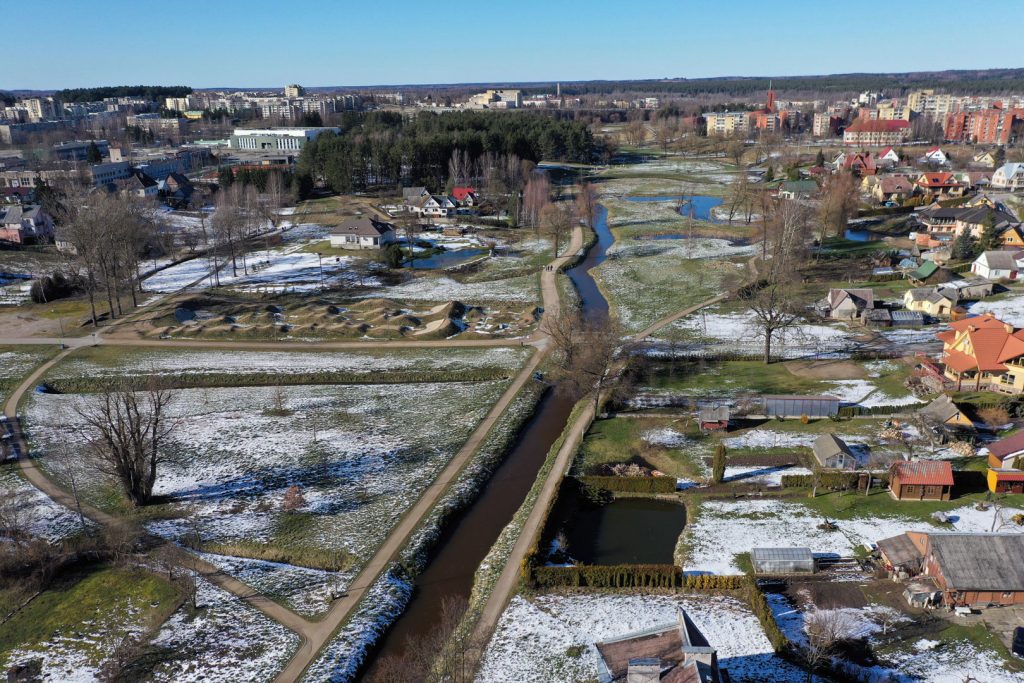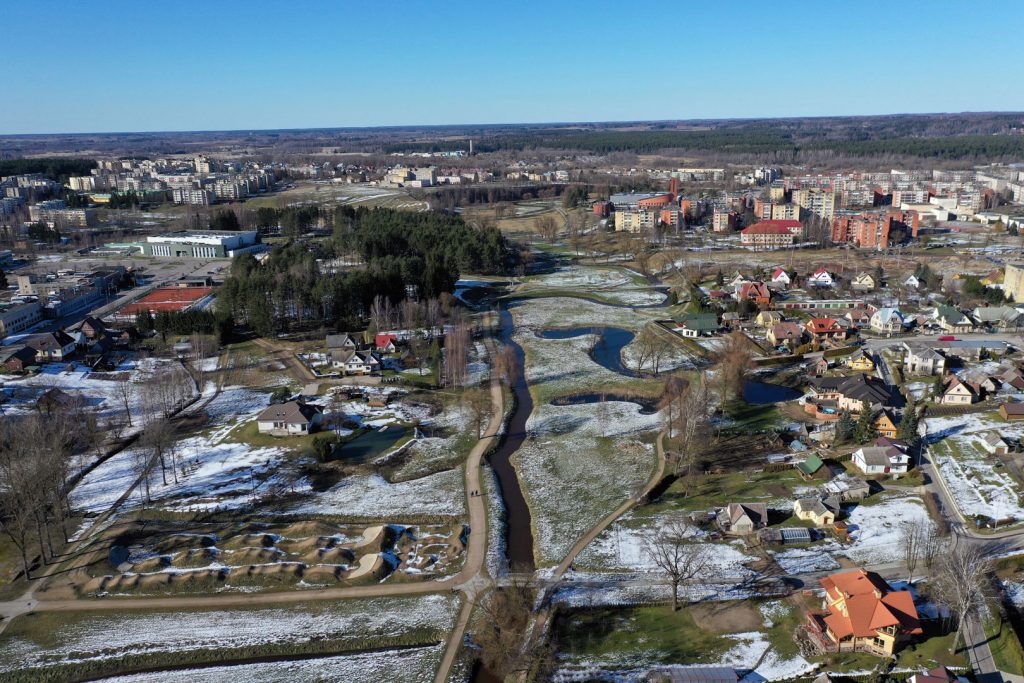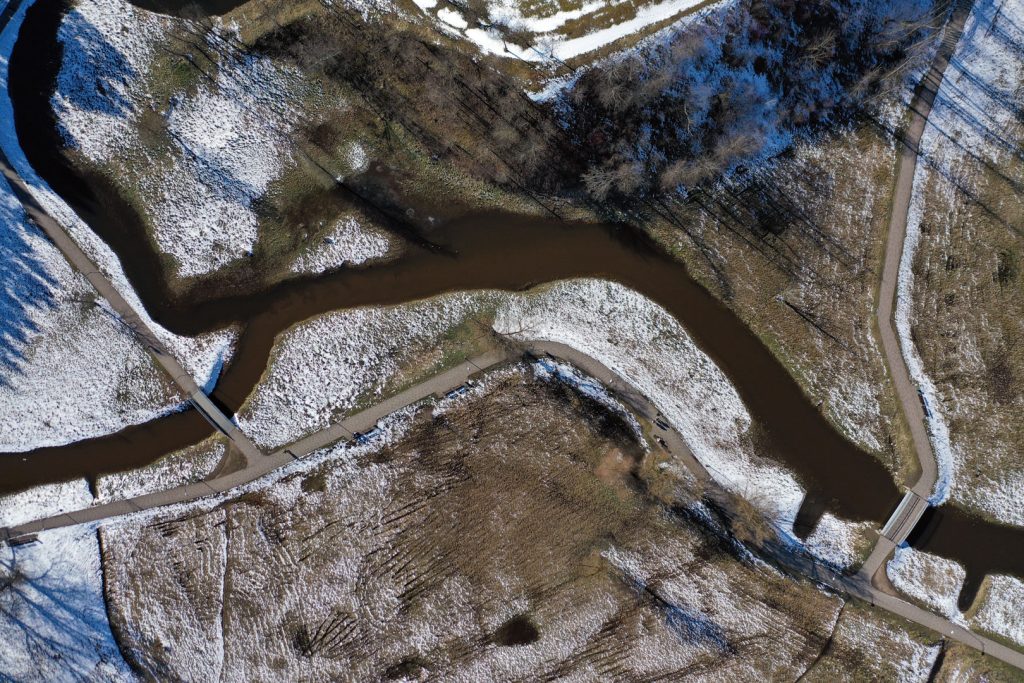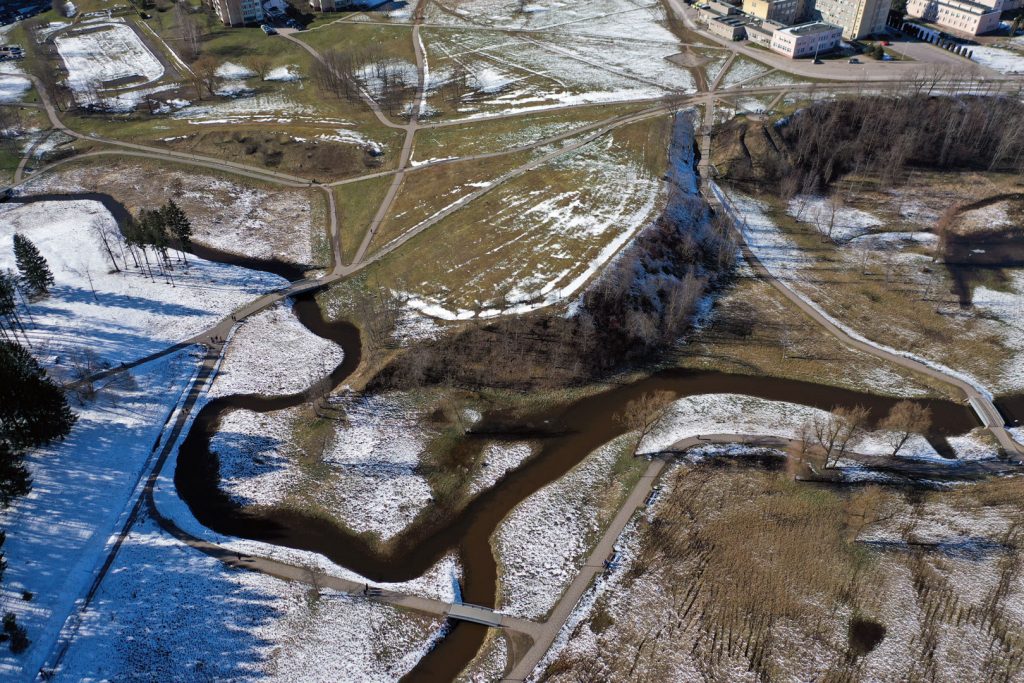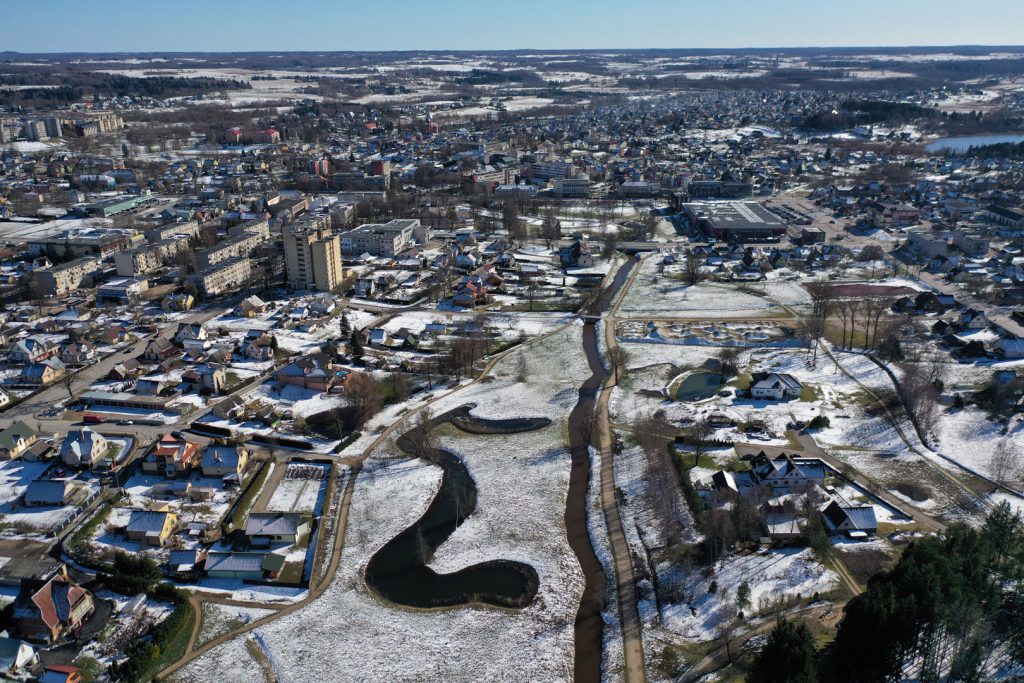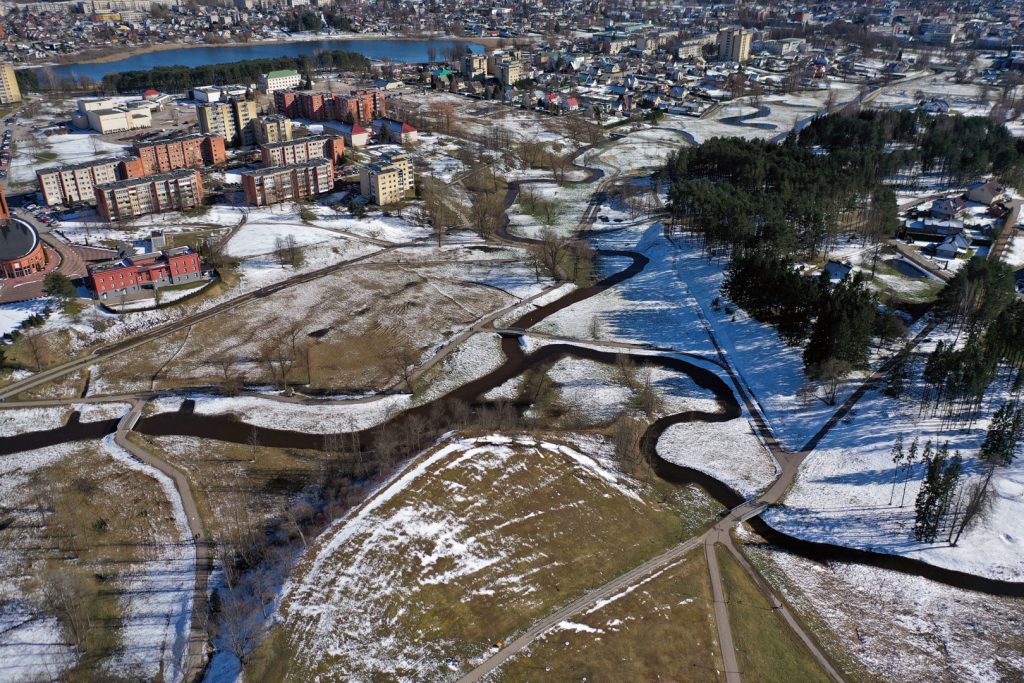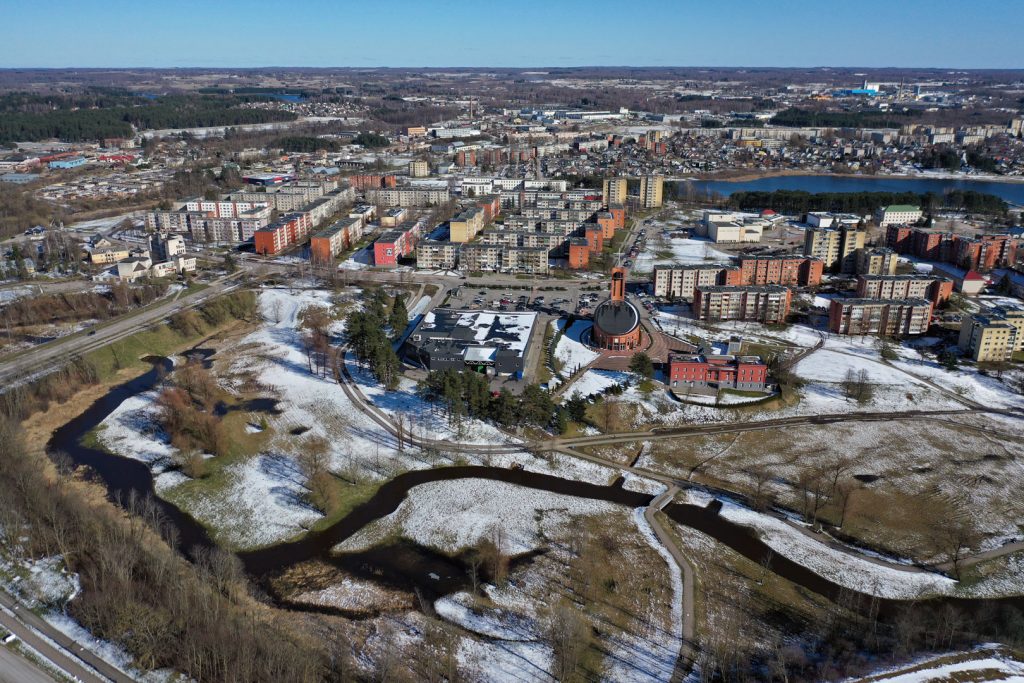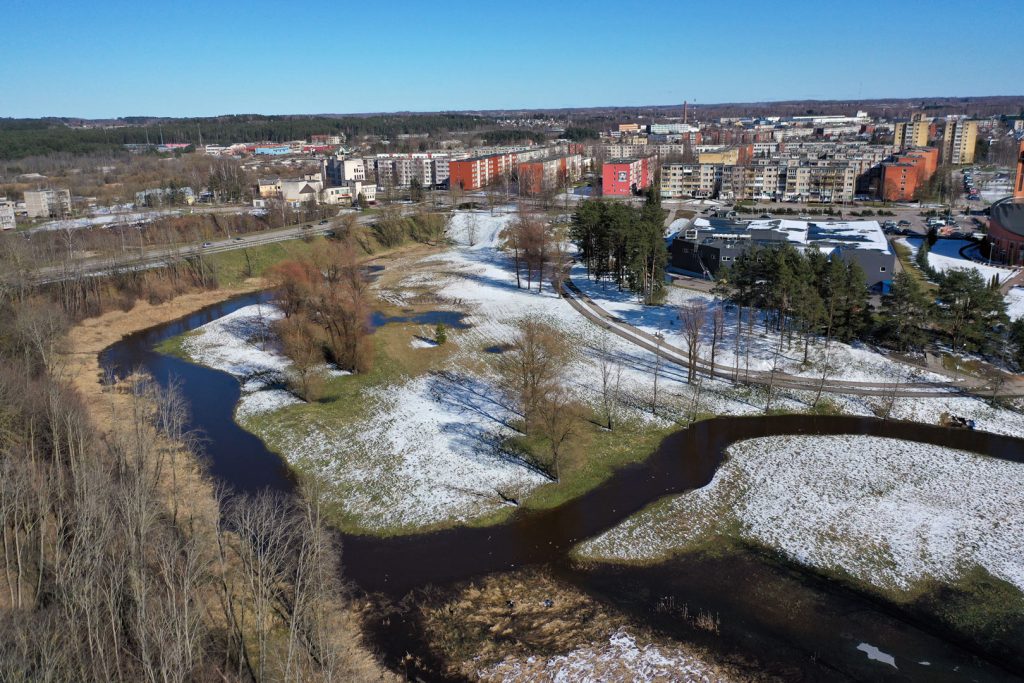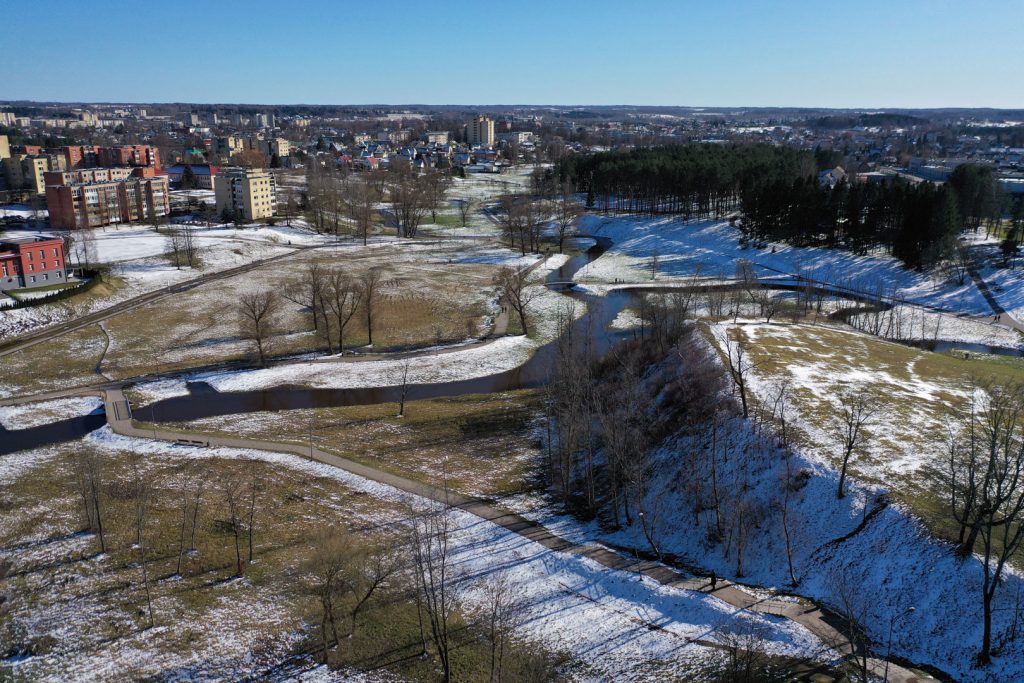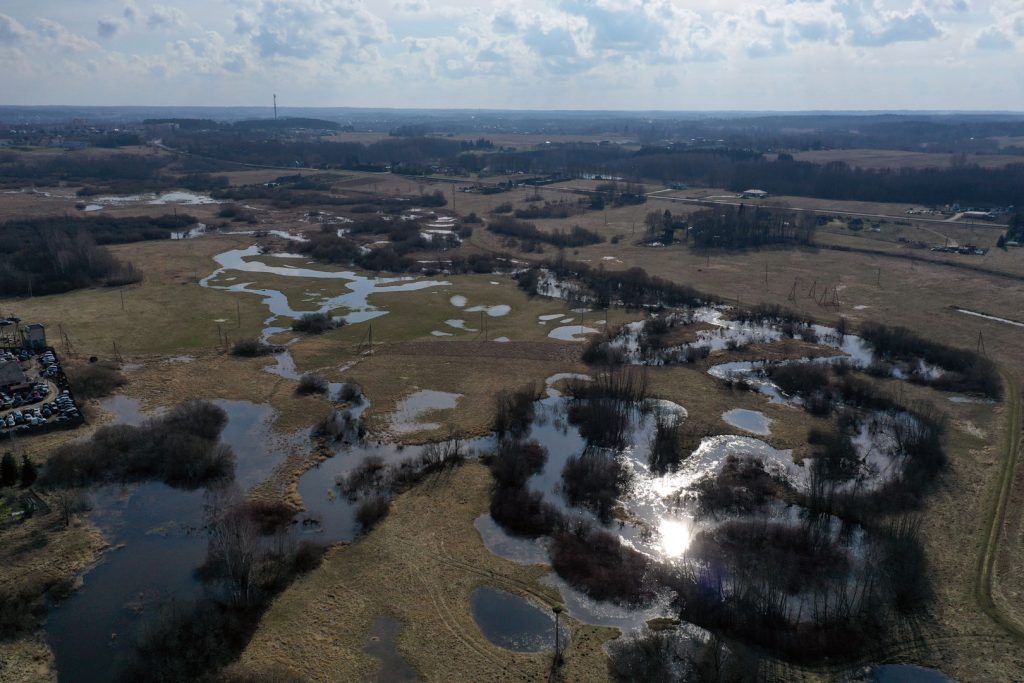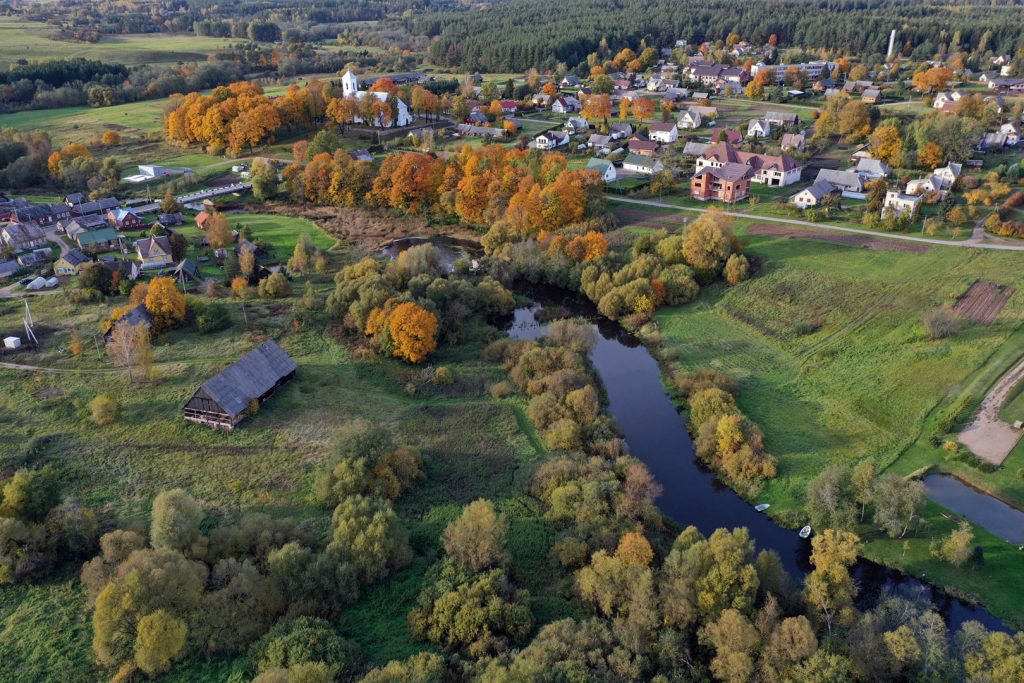Vyžuona
Utena district could be justly called “the land of Vyžuona“ since it occupies one third of the territory. The furthest upper reaches of Vyžuona (the area of the basin 414.7 km²) start in Molėtai district, about 5 km south of Kvykliai, and the mouth of the river on the junction of Utena and Anykščiai districts, about 3 km north-west of Vyžuonos. The line connecting the points of this river-basin would be 30 km in length. The formal source of Vyžuona is the confluence of the rivulets Krašuona and Vieša (in the city Utena). Because of this the length of the river now reaches only 26 km, but in the old reference books (1959) it was estimated to be even 55 km (estimating from the furthest sources of the river-basin). Below Utena the river bed the river becomes lower by about 1 m for each kilometer, the average incline is only 0.085%. The river flows widely on the outskirts of forests and it valley is squeezed with higher banks. The average yield of water in the mouth 3.8 m³/s.
Vyžuonos water mill
It started its operation 200 years ago and had been in use for most of the period. In an official inspection document of the mill it was recorded that the enterprise was on the left bank of the river Vyžuona. The building: walls from logs on stone foundations, covered with shingles. The turbine is home-made, of about 40 horsepower. The mill used to have two pairs of grindstones, a granary, millstones for fine quality flour, rotating saw, a dynamo machine of 16 kW. In the dam there was a spare passageway for water and a bridge. There was enough work for all day. There was enough water power for both pairs of grindstones to work at the same time. The mill satisfied the needs of local people.
In 1941, in the mill with the electric station 4 laborers worked two shifts and ground 150 centners of grain.
The regimen of water was maintained by two dams. In spring when snow was melting the surplus of water was drained. During spring floods the meadows were flooded from Lydekis lake to the dam. The small island where local people kept their cows would all disappear under the water. The dammed river flooded about 10 ha of land because of which Lydekis lake used to be much bigger. There was a lot of fish which local people, children and adults, used to catch.
The mill consisted of two floors. Because there was a slope, grain was delivered at the door on the second floor and flour was taken below, through the door at the first floor near the river. Next to the mill there also was a fulling-mill, and next to it living premises where the supervisor of the mill lived. Electricity supplied to the mill was of direct current, so it could not be used to connect any domestic appliances. Electricity was switched on in the evening and remained on till the midnight. Before switching off it blinked three times. If it happened that someone had a kind of a party, the electrician was asked to keep the light on for longer.
After the war the mill belonged to Utena grain preparation station and worked at its full capacity, and people used to wait all night long and come from further locations.
Later the mill was transferred to the collective farm. As rolls stopped working, only simple flour was made.
Around 1963-1964 the town was electrified and electricity was started to be used for grinding. The abandoned building started to deteriorate, water severely damaged the stone foundation of the middle support. Some local people being too lazy to go to the forest for wood, began to steal logs for fire. What a sad and ungrateful fate of the old mill, the former object of proud of Vyžuonos township and which outlived two world wars.
